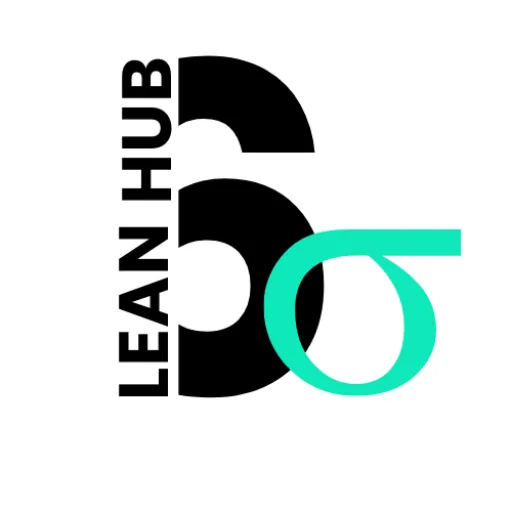Improving Efficiency with Kaizen Lean Six Sigma
In our journey toward operational excellence, we often encounter methodologies that promise to enhance efficiency and quality. Among these, Kaizen Lean Six Sigma stands out as a powerful approach that combines the principles of continuous improvement (Kaizen), waste reduction (Lean), and quality management (Six Sigma). Each component plays a crucial role in creating a holistic framework that not only addresses inefficiencies but also fosters a culture of ongoing enhancement within organizations.
By understanding these principles, we can better appreciate how they interconnect to drive significant improvements in our processes. Kaizen, which translates to “change for the better,” emphasizes the importance of small, incremental changes rather than large-scale transformations. This philosophy encourages us to engage all employees in the improvement process, fostering a sense of ownership and accountability.
Lean principles focus on eliminating waste—whether it be time, materials, or labor—ensuring that every step in our processes adds value. Meanwhile, Six Sigma provides us with the tools to measure and analyze our processes, aiming for near perfection by reducing variability and defects. Together, these methodologies create a robust framework that empowers us to enhance our operations systematically.
Key Takeaways
- Kaizen Lean Six Sigma is a continuous improvement methodology that focuses on eliminating waste and improving efficiency.
- Implementing Kaizen Lean Six Sigma in the workplace involves creating a culture of continuous improvement and empowering employees to identify and solve problems.
- Identifying areas for improvement involves analyzing processes, gathering feedback from employees, and using tools like value stream mapping to identify waste and inefficiencies.
- Setting goals and metrics for improvement is essential for tracking progress and ensuring that the improvement efforts are aligned with the organization’s strategic objectives.
- Engaging employees in the improvement process is crucial for success, as they are the ones who are closest to the processes and can provide valuable insights for improvement.
Implementing Kaizen Lean Six Sigma in the Workplace
As we embark on the journey of implementing Kaizen Lean Six Sigma in our workplace, we must first cultivate an environment that is conducive to change. This involves not only training our teams on the principles and tools associated with these methodologies but also fostering a culture that embraces continuous improvement. We can start by organizing workshops and training sessions that introduce our employees to the concepts of Kaizen, Lean, and Six Sigma, ensuring that everyone understands their roles in this transformative process.
Once we have established a foundational understanding, we can begin to integrate these principles into our daily operations. This might involve forming cross-functional teams tasked with identifying inefficiencies and proposing solutions. By encouraging collaboration across departments, we can leverage diverse perspectives and expertise, leading to more innovative solutions.
Additionally, we should implement regular review meetings where teams can share their progress, challenges, and successes.
This not only keeps everyone aligned but also reinforces the importance of continuous improvement as a shared goal.
Identifying Areas for Improvement
To effectively implement Kaizen Lean Six Sigma, we must first identify the areas within our organization that require improvement. This process begins with a thorough analysis of our current operations, where we can pinpoint inefficiencies and bottlenecks. We can utilize various tools such as value stream mapping to visualize our processes and identify steps that do not add value.
By engaging employees at all levels in this analysis, we can gather insights from those who are directly involved in the processes, ensuring that we address real issues rather than perceived ones. Moreover, we should consider gathering feedback from customers as well. Their perspectives can provide valuable insights into areas where we may be falling short or where improvements could enhance their experience.
By combining internal assessments with external feedback, we can create a comprehensive picture of our operational landscape. This dual approach not only helps us identify areas for improvement but also fosters a culture of collaboration and openness within our organization.
Setting Goals and Metrics for Improvement
| Metrics | Current Performance | Target |
|---|---|---|
| Customer Satisfaction | 85% | 90% |
| Employee Turnover Rate | 15% | 10% |
| Revenue Growth | 10% | 15% |
| Productivity | 80% | 85% |
Once we have identified areas for improvement, the next step is to set clear goals and metrics that will guide our efforts. Establishing specific, measurable, achievable, relevant, and time-bound (SMART) goals is essential for ensuring that our improvement initiatives are focused and effective. For instance, if we identify a bottleneck in our production line, we might set a goal to reduce cycle time by 20% within six months.
This clarity helps us maintain focus and provides a benchmark against which we can measure our progress. In addition to setting goals, we must also define key performance indicators (KPIs) that will allow us to track our improvements over time. These metrics should align with our overall business objectives and provide insights into how well we are achieving our goals.
Regularly reviewing these KPIs will enable us to make data-driven decisions and adjust our strategies as needed. By establishing a robust framework for goal-setting and measurement, we can ensure that our Kaizen Lean Six Sigma initiatives remain on track and deliver tangible results.
Engaging Employees in the Improvement Process
Engaging employees in the improvement process is critical to the success of Kaizen Lean Six Sigma initiatives. When employees feel valued and involved in decision-making, they are more likely to take ownership of their work and contribute positively to the organization’s goals. To foster this engagement, we should create an open environment where employees feel comfortable sharing their ideas and suggestions for improvement.
Regular brainstorming sessions or suggestion boxes can serve as platforms for employees to voice their thoughts. Additionally, recognizing and rewarding contributions from employees can further enhance their engagement. Celebrating small wins and acknowledging individuals or teams who have made significant improvements can motivate others to participate actively in the process.
By creating a culture of recognition and appreciation, we not only boost morale but also reinforce the idea that everyone has a role to play in driving continuous improvement.
Using Data and Analysis to Drive Improvement
Informed Decision-Making
This data-driven approach enables us to make informed decisions rather than relying on intuition or anecdotal evidence. Moreover, conducting root cause analysis is essential for understanding the factors contributing to inefficiencies or defects.
Techniques such as the 5 Whys or fishbone diagrams can help us dig deeper into problems and uncover their root causes.
Sustainable Improvements through Root Cause Analysis
By addressing these root causes rather than merely treating symptoms, we can implement more effective solutions that lead to sustainable improvements. Ultimately, by harnessing the power of data and analysis, we can drive meaningful change within our organization.
Sustaining Improvement with Kaizen Lean Six Sigma
Sustaining improvement is often one of the most challenging aspects of implementing Kaizen Lean Six Sigma. Once we achieve initial successes, it is crucial to maintain momentum and ensure that improvements become ingrained in our organizational culture. One effective strategy is to establish standard operating procedures (SOPs) that document best practices resulting from our improvement initiatives.
By formalizing these processes, we create a framework that guides future work and helps prevent regression. Additionally, ongoing training and development are vital for sustaining improvement efforts. As new employees join our organization or as existing employees take on new roles, it is essential to provide them with the necessary training on Kaizen Lean Six Sigma principles.
Regular refresher courses can also help keep these concepts top-of-mind for all employees. By embedding continuous improvement into our organizational DNA, we can ensure that it remains a priority long after initial successes have been achieved.
Measuring the Impact of Kaizen Lean Six Sigma on Efficiency
Finally, measuring the impact of Kaizen Lean Six Sigma on efficiency is essential for demonstrating the value of these initiatives to stakeholders within our organization. By analyzing pre- and post-implementation data, we can quantify improvements in key areas such as productivity, quality, and customer satisfaction. For instance, if we successfully reduce cycle times or defect rates, we should be able to present concrete data illustrating these enhancements.
Furthermore, sharing success stories across the organization can inspire others to embrace Kaizen Lean Six Sigma principles in their own work areas. By highlighting tangible results achieved through these methodologies, we create a compelling case for continued investment in improvement initiatives. Ultimately, by measuring and communicating the impact of Kaizen Lean Six Sigma on efficiency, we reinforce its importance as a strategic approach for driving organizational success.
In conclusion, embracing Kaizen Lean Six Sigma offers us a pathway toward continuous improvement and operational excellence. By understanding its principles, engaging employees, utilizing data-driven analysis, and sustaining improvements over time, we position ourselves for long-term success in an ever-evolving business landscape.
FAQs
What is Kaizen Lean Six Sigma?
Kaizen Lean Six Sigma is a methodology that combines the principles of Kaizen, Lean, and Six Sigma to improve processes and eliminate waste in an organization.
What is Kaizen?
Kaizen is a Japanese term that means “continuous improvement.” It focuses on making small, incremental changes to processes and systems to improve efficiency and quality.
What is Lean?
Lean is a methodology that focuses on eliminating waste and improving flow in processes. It aims to create more value for customers with fewer resources.
What is Six Sigma?
Six Sigma is a data-driven methodology that aims to reduce defects and variation in processes. It focuses on improving quality and reducing errors.
How does Kaizen Lean Six Sigma work?
Kaizen Lean Six Sigma combines the principles of Kaizen, Lean, and Six Sigma to identify and eliminate waste, improve flow, and reduce defects in processes. It uses a combination of tools and techniques to achieve continuous improvement.
What are the benefits of Kaizen Lean Six Sigma?
The benefits of Kaizen Lean Six Sigma include improved efficiency, reduced waste, higher quality, increased customer satisfaction, and cost savings for the organization.
What are some tools and techniques used in Kaizen Lean Six Sigma?
Some tools and techniques used in Kaizen Lean Six Sigma include value stream mapping, 5S, Kanban, root cause analysis, statistical process control, and DMAIC (Define, Measure, Analyze, Improve, Control).
Is Kaizen Lean Six Sigma suitable for all types of organizations?
Kaizen Lean Six Sigma can be applied to various types of organizations, including manufacturing, service, healthcare, and government. It is adaptable and can be tailored to suit the specific needs of different industries.






